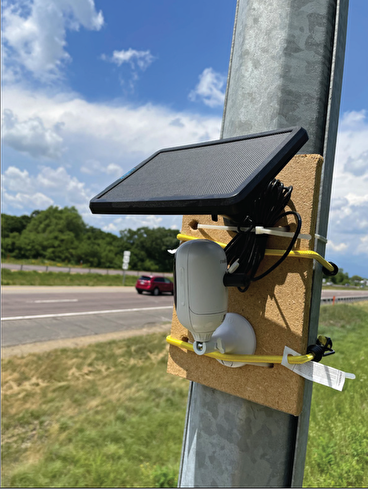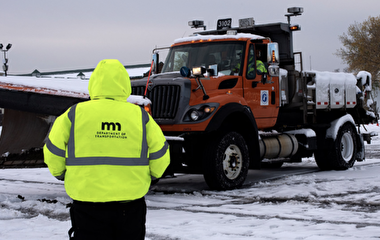
Traffic performance data is integral to MnDOT’s planning, funding, and decision-making processes. Building on previous studies and sponsored by MnDOT, a 2021 U of M project refined a new, more cost-effective data-collection method that leverages already-existing technologies.
“It takes a significant amount of time and effort to collect vehicle classification data annually,” says Chen-Fu Liao, former senior research associate with the U’s Department of Mechanical Engineering and the principal investigator for the project.
Across the state, Liao says, MnDOT deploys data-collecting sensors such as weigh-in-motion recorders, automated traffic recorders (ATRs), and inductive loop signature detectors. The data can be used for infrastructure planning, safety evaluations, traffic forecasting and modeling, and progress evaluation to apply for general funding. The extent of these sensors is limited, however, usually because of cost.
“With the limited number of permanent devices collecting classification data,” Liao says, “the agency spends significant funding, time, and effort on other shorter-term methods to gather the needed information.”
To address this need for more cost-effective data collection, the USDOT’s Small Business Innovation Research program sponsored a project in 2013 that aimed to use existing inductive loop signature technology for classifying vehicles.

Loop sensors work similarly to a metal detector: A series of coiled wires embedded under the pavement register changes in their electrical fields when a vehicle is present. When combined with axle sensors, loop sensors can produce classification data such as vehicle speed and length. The 2013 project developed a system that could turn this into usable traffic performance data.
Following the 2013 project, the system was installed and tested in states such as California, Alaska, and Minnesota. The method showed promise, Liao says, though results in these earlier studies were mixed and MnDOT wanted to further explore the technology.
Many ATR stations in Minnesota—especially on freeways and ramps and at traffic signals—already have basic loop detectors built into them. For the 2021 project, the researchers installed the new inductive loop signature system at these stations. They also added video cameras so that the sensor results could be visually confirmed, Liao says.
Following this data collection, the research team refined the loop classification system and reevaluated vehicle classification accuracy. The most significant refinement was an update to the vehicle class library. Researchers added the electronic signatures of 2,000 vehicles to the library.
After manually analyzing 10,837 vehicle loop signatures, the researchers found that the system was generally relatively accurate. Smaller classes of vehicles—such as cars and pickup trucks—were generally identified more accurately, with misclassifications tending to happen with larger trucks or when a truck was pulling a trailer.
Overall, Liao says, the technology shows promise, and MnDOT has plans to install this new system at many ATR locations across the state. Adding data to the classification library—particularly for heavy commercial vehicles—will improve classification accuracy.
“This research showed that the inductive loop signature technology is a feasible and more cost-effective method to classify vehicles at multiple sites that didn’t have that capability before,” says Gene Hicks, director of MnDOT Traffic Forecasting and Analysis.
Writer: Sophie Koch


